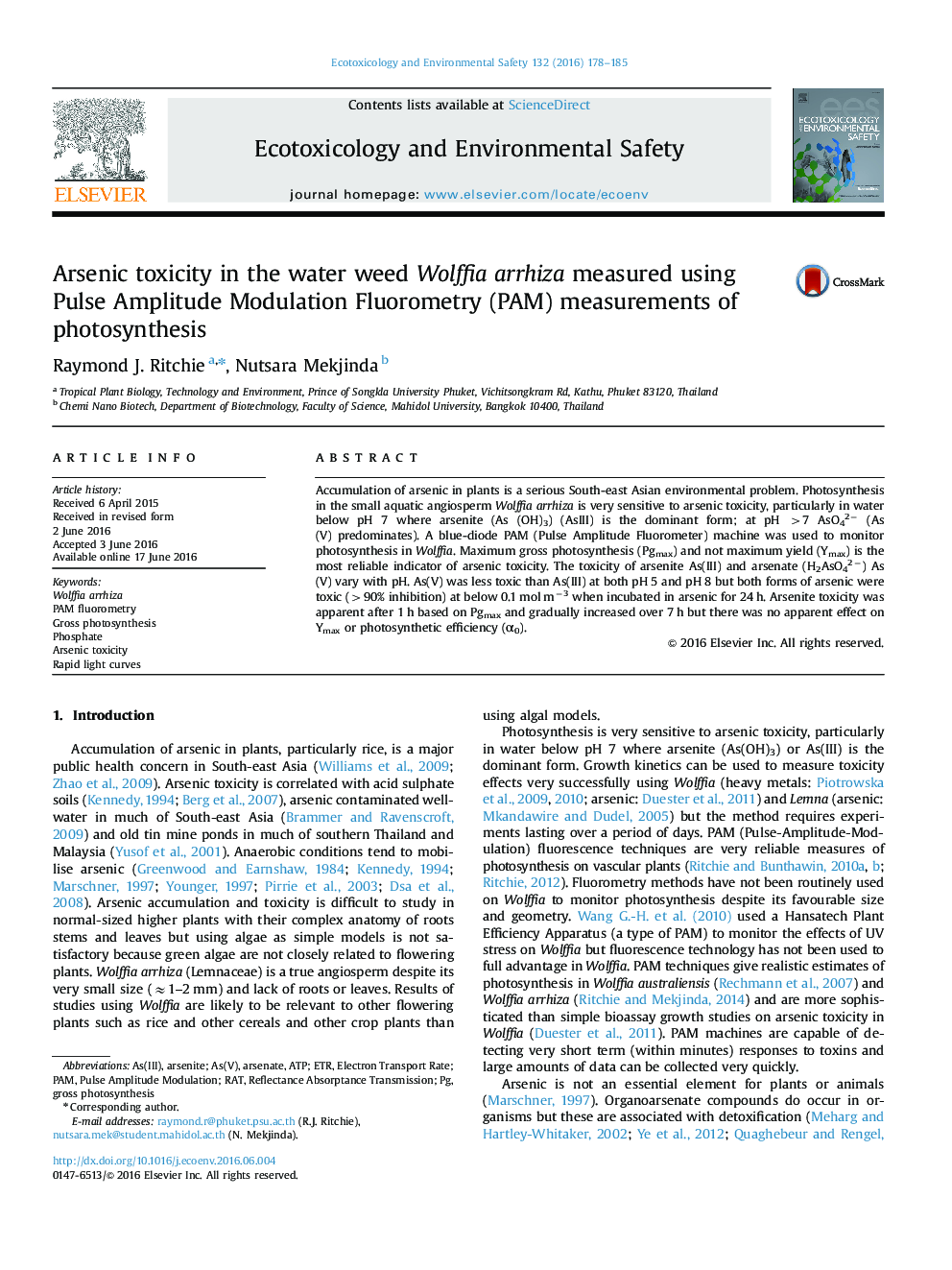| Article ID | Journal | Published Year | Pages | File Type |
|---|---|---|---|---|
| 4419079 | Ecotoxicology and Environmental Safety | 2016 | 8 Pages |
•Wolffia arrhiza was used to monitor arsenic toxicity in plants.•Maximum gross photosynthesis (Pgmax) is the best monitor for arsenic toxicity.•Arsenite is more toxic than arsenate and relative toxicity is pH dependent.
Accumulation of arsenic in plants is a serious South-east Asian environmental problem. Photosynthesis in the small aquatic angiosperm Wolffia arrhiza is very sensitive to arsenic toxicity, particularly in water below pH 7 where arsenite (As (OH)3) (AsIII) is the dominant form; at pH >7 AsO42− (As(V) predominates). A blue-diode PAM (Pulse Amplitude Fluorometer) machine was used to monitor photosynthesis in Wolffia. Maximum gross photosynthesis (Pgmax) and not maximum yield (Ymax) is the most reliable indicator of arsenic toxicity. The toxicity of arsenite As(III) and arsenate (H2AsO42−) As(V) vary with pH. As(V) was less toxic than As(III) at both pH 5 and pH 8 but both forms of arsenic were toxic (>90% inhibition) at below 0.1 mol m−3 when incubated in arsenic for 24 h. Arsenite toxicity was apparent after 1 h based on Pgmax and gradually increased over 7 h but there was no apparent effect on Ymax or photosynthetic efficiency (α0).
